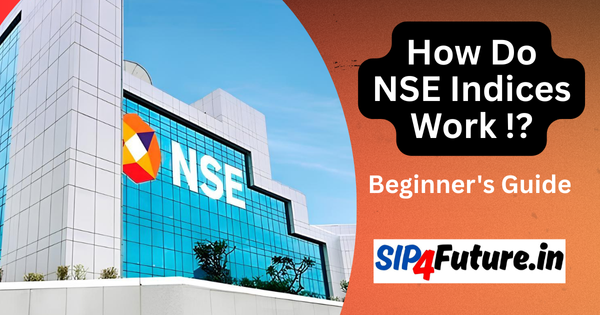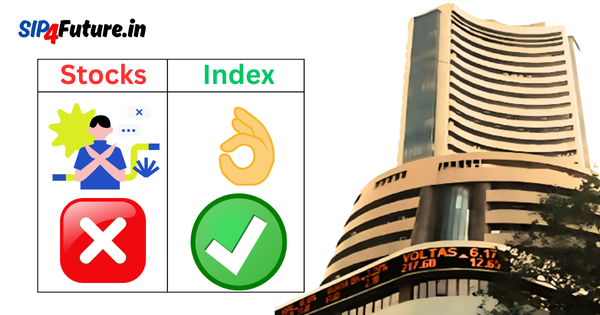Go Fashion (India) Ltd, listed as GOCOLORS on the NSE, has emerged as a standout performer in India’s competitive retail apparel sector. On April 30, 2025, the company’s stock surged 8.77% to ₹796.85, reflecting investor confidence following its robust FY25 financial results. With revenue climbing 11% to ₹848.20 crores and profit after tax (PAT) rising 13% to ₹93.50 crores, Go Fashion demonstrates resilience and strategic foresight. This article dives into the company’s performance, the factors driving its success, and the broader market dynamics shaping its trajectory, while exploring how government policies, sector trends, and global market conditions influence its stock price.
What Drives Go Fashion’s FY25 Success?
Financial Performance Highlights
Go Fashion’s FY25 results underscore its ability to thrive in a challenging retail landscape. The company reported a total revenue of ₹848.2 crores, an 11% year-on-year (YoY) increase, driven by strong same-store sales and strategic store expansion. Its gross profit margin improved to 63.3%, reflecting disciplined inventory management and a focus on full-price sales, which accounted for 95.4% of its revenue. EBITDA grew 11% to ₹268.0 crores, with a steady margin of 31.6%, while PAT rose 13% to ₹93.5 crores, showcasing operational efficiency.
| Metric | FY25 | FY24 | YoY Growth |
|---|---|---|---|
| Total Revenue | ₹848.2 Cr | ₹762.8 Cr | 11% |
| Gross Profit | ₹536.8 Cr | ₹470.8 Cr | 14% |
| EBITDA | ₹268.0 Cr | ₹241.3 Cr | 11% |
| PAT | ₹93.5 Cr | ₹82.8 Cr | 13% |
| Gross Profit Margin | 63.3% | 61.7% | +1.6% |
| EBITDA Margin | 31.6% | 31.6% | Stable |
Strategic Initiatives Fueling Growth
Go Fashion’s success stems from its focus on operational excellence and customer-centric strategies. The company’s CEO emphasized investments in technology, product innovation, and supply chain optimization as key growth drivers. By maintaining a high full-price sales ratio, Go Fashion minimizes reliance on discounts, preserving brand value. Its aggressive expansion plan to open 130–140 Exclusive Brand Outlets (EBOs) annually, targeting a net addition of ~120 stores, positions it to capture growing demand in India’s women’s apparel market. As of FY25, Go Fashion operates 776 EBOs and 2,386 Large Format Stores (LFSs), reflecting a 62-store addition in the fiscal year.
How Does Go Fashion Fit into India’s Retail Sector?
Women’s Apparel Market Dynamics
The Indian women’s apparel market, valued at approximately $22 billion in 2024, is projected to grow at a CAGR of 8–10% through 2030, driven by rising disposable incomes, urbanization, and evolving consumer preferences. Go Fashion, with its focus on premium bottom wear and kidswear, capitalizes on these trends. Its brand, Go Colors, resonates with young, fashion-conscious consumers, offering a diverse product portfolio that blends style and affordability. The company’s ability to maintain a gross profit margin of 63.3% in a price-sensitive market highlights its competitive edge.
Sectoral Impact on Stock Performance
The retail sector, particularly consumer discretionary, accounted for a significant portion of capital raised on the NSE’s Main Board in FY25, with Maharashtra, Tamil Nadu, and Karnataka leading the charge. According to a recent NSE report, consumer discretionary firms, including apparel retailers like Go Fashion, contributed 65% of the capital raised, reflecting strong investor interest. This sectoral strength supports Go Fashion’s stock performance, as investors view it as a stable bet in a high-growth industry. However, competition from e-commerce giants and unorganized players poses challenges, which Go Fashion counters through its strong offline presence and brand loyalty.
What Role Do Government Policies Play?
Supportive Policies Boost Retail Growth
Government initiatives like Make in India and the Production Linked Incentive (PLI) scheme for textiles have bolstered India’s retail and apparel sectors. The PLI scheme, aimed at enhancing domestic manufacturing, has encouraged companies like Go Fashion to invest in local production, reducing import dependency and improving margins. Additionally, the Ministry of Textiles has introduced policies to promote sustainable fashion, aligning with Go Fashion’s efforts to adopt eco-friendly materials and ethical sourcing practices. These policies create a favorable environment for Go Fashion, enhancing its operational efficiency and investor appeal.
Tax Reforms and Consumer Spending
Recent tax reforms, including simplified GST rates for apparel, have reduced compliance burdens for retailers, allowing Go Fashion to streamline costs. Lower GST rates on clothing priced below ₹1,000 have spurred consumer spending, particularly in Tier-II and Tier-III cities, where Go Fashion is expanding its EBOs. These cities, benefiting from improved infrastructure under schemes like Smart Cities Mission, offer untapped markets for organized retail, directly impacting Go Fashion’s revenue growth and stock price.
How Global Market Conditions Influence Go Fashion’s Stock?
Global Retail Trends and Supply Chain Dynamics
The global apparel market, valued at $1.7 trillion in 2024, faces challenges like supply chain disruptions and rising raw material costs. However, Go Fashion’s reliance on domestic sourcing mitigates these risks, ensuring stable margins. The company’s stock price benefits from India’s position as a resilient market amid global uncertainties, with foreign institutional investors (FIIs) increasing their stakes in consumer discretionary stocks in Q4 FY25. According to Moneycontrol, FIIs boosted their holdings in select Nifty 50 stocks, reflecting confidence in India’s retail growth story.
Impact of U.S.-China Trade Dynamics
Reduced trade tensions between the U.S. and China, coupled with optimism about a potential U.S.-India trade deal, have bolstered investor sentiment in Indian markets. On April 29, 2025, the Nifty 50 index saw gains driven by FII inflows, indirectly supporting stocks like Go Fashion. Stable global trade conditions ensure smoother raw material imports for Go Fashion’s kidswear segment, which relies on specialized fabrics, further stabilizing its stock performance.
When Will Go Fashion’s Expansion Pay Off?
Store Expansion Strategy
Go Fashion’s plan to add 120 stores annually is ambitious yet achievable, given its strong cash flow and operational track record. The company’s focus on Tier-II and Tier-III cities aligns with rising consumer demand in these regions, where organized retail penetration remains low. By FY30, Go Fashion aims to operate over 1,300 EBOs, potentially doubling its revenue base. This expansion, coupled with investments in digital channels, is expected to enhance its market share and drive stock price appreciation.
Technology and Innovation as Growth Catalysts
Go Fashion’s investments in technology, including AI-driven inventory management and CRM systems, optimize store-level performance and customer engagement. Its e-commerce platform, contributing ~10% of revenue, is set to grow as digital adoption rises. These initiatives position Go Fashion to capitalize on India’s projected $2 trillion retail market by 2030, reinforcing its long-term growth prospects.
What Challenges Lie Ahead for Go Fashion?
Competitive Pressures
Despite its strong performance, Go Fashion faces competition from both organized players like Aditya Birla Fashion and e-commerce platforms like Myntra. Maintaining its 95.4% full-price sales ratio in a discount-driven market requires continuous innovation and brand differentiation. Additionally, rising rental costs in urban centers could pressure margins, though Go Fashion’s focus on smaller cities mitigates this risk.
Macroeconomic Risks
Inflationary pressures and fluctuating consumer sentiment pose risks to discretionary spending. While Go Fashion’s target demographic—young, urban women—remains resilient, any economic slowdown could impact same-store sales. The company’s disciplined inventory management and diversified product offerings, however, provide a buffer against such challenges.
How Has Go Fashion’s Stock Performed Historically?
Go Fashion’s stock has delivered consistent returns since its IPO in November 2021. Over the past three years, it has achieved a compounded annual growth rate (CAGR) of ~15%, outperforming the Nifty Midcap 100 index. The table below summarizes its historical returns:
| Period | Return | Nifty Midcap 100 Return |
|---|---|---|
| 1 Year (FY25) | 22% | 18% |
| 2 Years | 35% | 30% |
| Since IPO (2021) | 48% | 40% |
The stock’s 8.77% surge on April 30, 2025, reflects market optimism about its FY25 results and expansion plans. Its market capitalization of ₹3,955.62 crores underscores its position as a midcap leader in retail.
What Do Analysts Predict for Go Fashion’s Future?
Analyst sentiment toward Go Fashion remains overwhelmingly positive, with several research firms issuing bullish targets for FY26 and beyond. Below are price targets and recommendations from leading institutes:
| Research Firm | Target Price (₹) | Recommendation | Horizon |
|---|---|---|---|
| ICICI Securities | 920 | Buy | 12 Months |
| Motilal Oswal | 880 | Buy | 12 Months |
| HDFC Securities | 850 | Accumulate | 12 Months |
| Kotak Institutional | 900 | Buy | 12 Months |
Analysts cite Go Fashion’s strong brand equity, scalable business model, and favorable retail sector tailwinds as reasons for their optimism. ICICI Securities projects a 15% revenue CAGR over FY25–FY28, driven by store additions and same-store sales growth. Motilal Oswal highlights the company’s margin resilience as a key differentiator, while Kotak Institutional expects e-commerce to contribute 15% of revenue by FY28.
Conclusion: Why Go Fashion Stands Out
Go Fashion (India) Ltd’s FY25 performance underscores its ability to navigate a competitive retail landscape with agility and foresight. With an 11% revenue increase, a 13% PAT growth, and a disciplined expansion strategy, the company is well-positioned to capitalize on India’s growing apparel market. Supportive government policies, a favorable global trade environment, and robust sectoral trends further enhance its growth prospects. While challenges like competition and macroeconomic risks persist, Go Fashion’s focus on innovation, technology, and customer-centricity ensures sustained momentum. For investors, its consistent historical returns and bullish analyst targets make it a compelling midcap stock to watch.
Disclaimer: The information provided in this article is for educational purposes only and should not be considered financial advice. Investing in stocks involves risks, and past performance is not indicative of future results. Readers should conduct their own research or consult a qualified financial advisor before making investment decisions.




